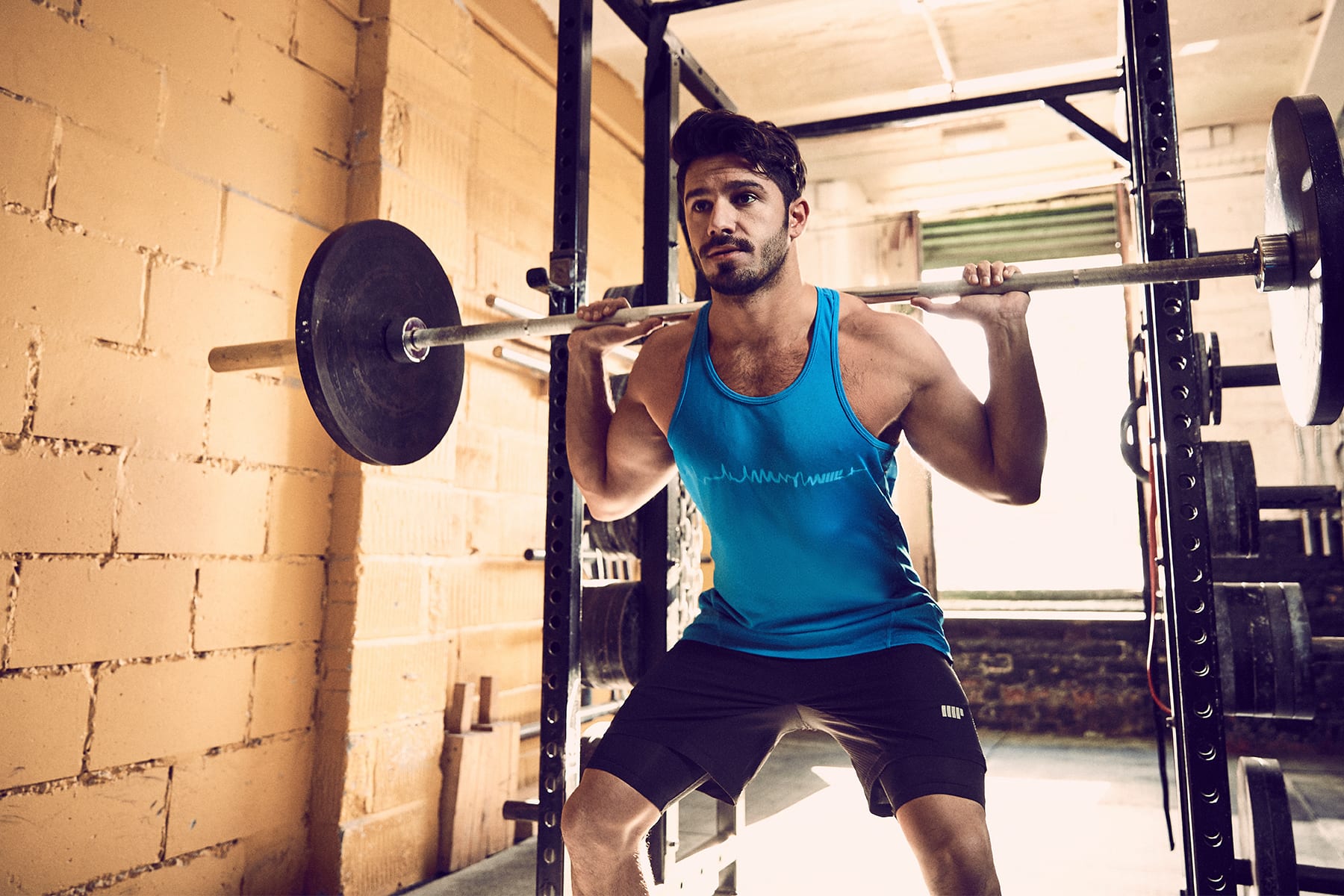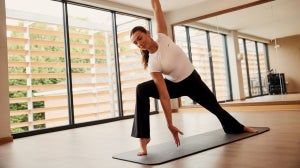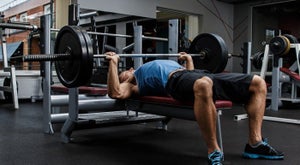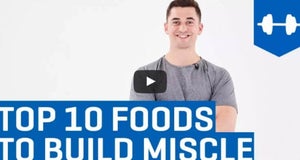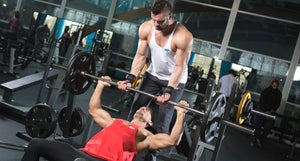
By Myprotein Writer |
Simon O' Connor
It is becoming common knowledge in this day and age that avoiding leg training is a mistake if you want to build strength or look aesthetically pleasing. Athletes and the general public alike, are becoming more health conscious, as we look for efficient ways to both increase performance and feel confident within ones appearance.
Perhaps our growing level of knowledge will diminish the days of only training upper body 't-shirt muscles'? Maybe the days are long gone of those who believe that only sticking to cardio machines is what works best for body-sculpting and weight loss?
People like routine and simple solutions, but whether you want to form more shape in your legs, lose fat or build strength, training the basics with the right adaption of weight and reps will produce results. Einstein once said; 'Insanity: doing the same thing over and over again and expecting different results'.
This is true of building lean muscle; if you have been doing the same leg workout for the last year, the chances are your legs do not look any different. With that said, training legs will always be essential and necessary to produce results and gain lean muscle mass!
'Quad' Science
To give you an example of the complexity of our lower limbs and perhaps why so many people fail to engage their muscles properly, here's what you need to know about quadriceps. Firstly, your quadriceps being the biggest muscle in your body are a more complex muscle grouping than you might first imagine.
Proper name; Quadriceps Femoris is the long muscle down the front of your leg. It is one of the major muscle groups of the leg and arises from four heads (origins) and they all converge to a single thick tendon between the knee (patella) and shin (tibia) known as the tibial tuberosity.
In other words, your quad muscles run down your leg from your hip to the base of your knee.
They can then be subdivided into four parts:
1) Rectus Femoris (from the iliac spine - pelvis)
2) Vastus Medialis (from the linea aspera - femur)
3) Vastus Lateralis (from the linea aspera - femur
4) Vastus Intermedius (from the anterior femoral shaft)
All four muscles work powerfully in tandem primarily as extensors of the knee joint. They are extremely important muscles when performing actions such as walking, running, jumping and squatting in addition to stabilising the patella.
According to the type of exercise you are doing, the position of your feet and knees can have huge baring on how much tension is placed on each part of the quadricep.
For example: if you were to train a squat with a wide stance and your toes pointing out at around 30 degrees (ballet squat), this will yield a stronger emphasis on the inner quad (Vastus Medialis).
Lean Muscle Growth
To increase size and strength, it is important to incorporate the various training types, complete with the right emphasis, effort and mental approach. I always like to preach balance when prescribing any fitness programme and building lean muscle mass is no different.
Some of the best athletes are those who have the most balanced attributes, so if we want to look good but also feel strong and fit and healthy, then balance is imperative. Granted we all have genetic strengths and weaknesses, but there is much we can do to advance our shape and build our bodies with the correct exercise and movements.
It may be easy enough to gain the experience to perform exercises for a decent workout, however the real test is adapting to avoid a frustrating plateau. From my experience, a lack of change (and knowledge) can result in a drop in performance and confidence and even worse; giving up completely.
Hip to be square - Warming up
Hips flex typically from muscle contraction, they are always at work even when sitting down. In fact, if you work at a desk your hips will be shorten up and become tight. This is bad for posture and can cause lower back issues and training compound leg exercises with bad posture isn't a good idea.
Think of your muscles like a group of elastic bands; if you stretch the bands a hundred times, sooner or later the bands will get tangled. The best way to untangle then is to undo the knots. In other words, your muscles tighten and shorten and can affect your flexibility and therefore ability to perform exercises.
I cannot stress how important it is to warm up correctly; stretch and foam roll your muscles. Most decent leg sessions will have huge baring not only on the tightness of your leg muscles but also the muscle surrounding your hips. Every task from a brisk walk to heavy squats will flex the hips and the tighter the muscle the higher the risk of injury.
Take it from me, I made this mistake and torn a spinal ligament, which can take ages to heal. You do not want to damage your spine so before going hell for leather be smart and warm up with these stretches:
Hold for 30 seconds each.
- Hip adductors - Seated butterfly
- Gluteals - Pigeon pose
- Rectus femoris - Standing quad stretch
- Hamstrings - Knee extension
- Hip flexors - Half lunge
- Back extension - Sphinx
Dynamic stretches are great for warming the joints and also raising your heart rate to a more appropriate level for more intense exercise. be sure to incorporate some of these movements:
Perform each for at least 30 seconds.
- Walking lunges with spinal rotation (twist)
- Lying glute bridge
- Good mornings (hip flexion)
- Hip rolls (lower back flexion)
- Body weight squats
- Front to back hip swing
LBM (lean body mass) & Strength Programme
Our goal here is to increase lean muscle mass and that involves growing the muscle and stripping body fat. Byproducts of the programme will be increased strength and muscle and cardio vascular endurance.
Because this is a 'leg focused' programme, I have not included the upper body days.
| DAY |
WORKOUT |
| Day 1 | Legs: Hypertrophy |
| Day 2 | Upper body |
| Day 3 | Upper body |
| Day 4 | Legs: Strength |
| Day 5 | Active Recovery |
DAY 1 | HYPERTROPHY
This day is all about training high volume for high damage. Because we all have different body types and will respond differently, there is no right amount of sets or reps. Training for muscle growth is as much about doing the basics as it is about listening to your body.
Adapting the reps, weight and rest across weeks will aid your gains. The most important thing here is the balance between consistency and keeping your body guessing. Varying the exercises with lighter and cosmetic exercises and keeping a solid structure for the fundamental exercises.
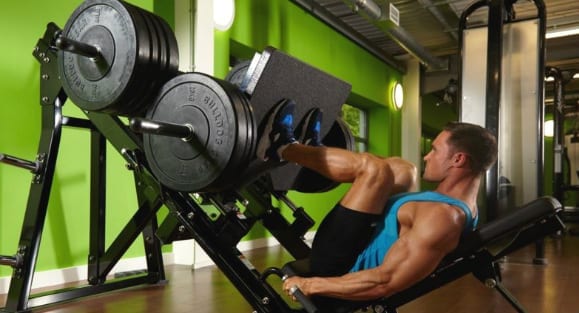
| Week 1 | 3 x 8-12 reps at 60%-70% 1RM |
| Week 2 | 4 x 6-8 reps at 70%-80% 1RM |
| Week 3 | 5 x 4-6 reps at 80%-90% 1RM |
Repeat the hypertrophy rep and set variations for weeks 4-12.
| Exercise #1 | Box jumps |
| Exercise #2 | Dumbbell lunges |
| Exercise #3 | Front squats |
| Exercise #4 | Romanian deadlift |
| Exercise #5 | Wide foot leg press |
| Exercise #6 | Narrow food leg press |
| Exercise #7 | Leg extension |
| Exercise #8 | Calf raises |
| REST PERIOD | 45-90 seconds |
DAY 4 | STRENGTH
There's no point looking like Thor if you can't lift the hammer.
Training for strength will recruit different muscle fibres and help build your legs further with low damage and high intense exercise.
Strength repetitions usually range from 1-5 and will result in a decent amount of muscle.
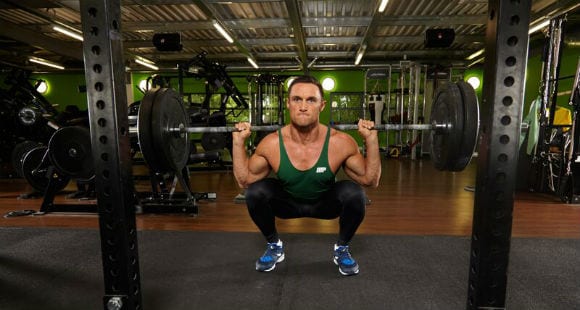
| Exercise #1 | Back squats |
| Exercise #2 | Sumo deadlift |
| Exercise #3 | Glute bridge |
| Exercise #4 | Bulgarian split squats |
| REST PERIOD | 2-5 Minutes |
| Week 1 | 5 x 5 |
| Week 2 | 5 x 5 |
| Week 3 | 5 x 4 |
| Week 4 | 5 x 4 |
| Week 5 | 4 x 4 |
| Week 6 | 4 x 4 |
| Week 7 | 4 x 3 |
| Week 8 | 4 x 3 |
| Week 9 | 3 x 3 |
| Week 10 | 3 x 3 |
| Week 11 | 3 x 2 |
| Week 12 | 3 x 2 |
DAY 5 | ACTIVE RECOVERY
This session is about facilitating blood flow. It should be quick and easy, low intensity and low muscle damage. Spend half an hour to an hour rolling your muscles, stretching and getting your blood flowing. This could be half an hour using your typical warm up movements combined with 30 minutes steady cardio
Exercises #1: Static stretches (use resistance bands and foam roller)
Exercises #2: Dynamic movements (body weight)
Exercises #3: Steady cardio (uphill walk, rower, ski erg, cross trainer, watt bike)
SummaryAs you can see there is a lot of variation between the prescribed exercises, foot placements, intensities and moving across various planes. It is important to put your muscles through many different tests, tension and stress. Adapting your workout will challenge your muscles to grow.
The high damage of the hypertrophy day will tear your muscles enough to repair and grow, and they will certainly do this when combined with proper nutrition - try our lean definition bundle for a supplement combo!
The high intensity of the strength programme with support and balance your overall programme and lean muscle growth and you will be stronger too! But don't forget to protect your spine with a weight lifting belt.
Finally, let me just say a programme doesn't always run according to plan. There are often set backs that may affect performance, like poor sleep, stress, illness and motivation. This is why not only adapting at peak performance is important but also listening to you body and training accordingly.
If you have low energy levels on one day, do not try and lift. Your technique only has to be off for an injury to occur and then you won't be able to train properly. Follow the plan as closely as possible and you will see results.
Take Home Points
? Train consistently.
? Adapt.
? Give your body a chance to recover.
? Listen to your body.
? Incorporate a nutrition plan.
? Leave your ego in the locker, lift safely.
? Don't try to copy others, work to your own strengths!
Our articles should be used for informational and educational purposes only and are not intended to be taken as medical advice. If you're concerned, consult a health professional before taking dietary supplements or introducing any major changes to your diet.

